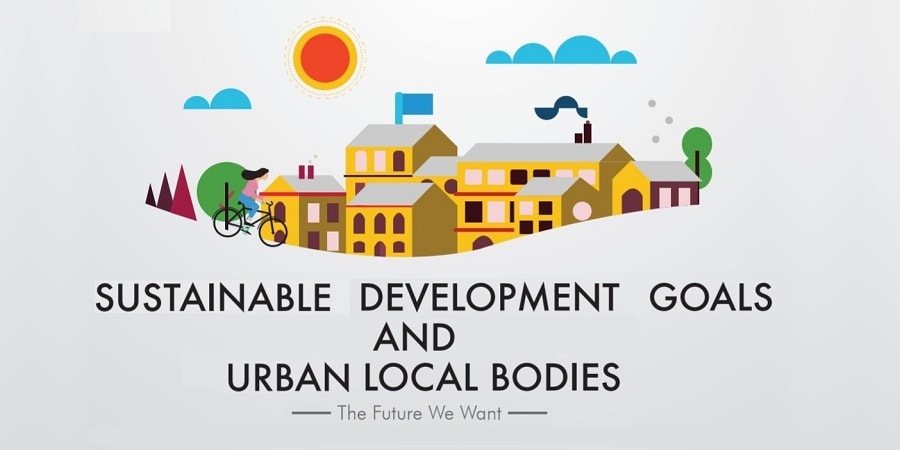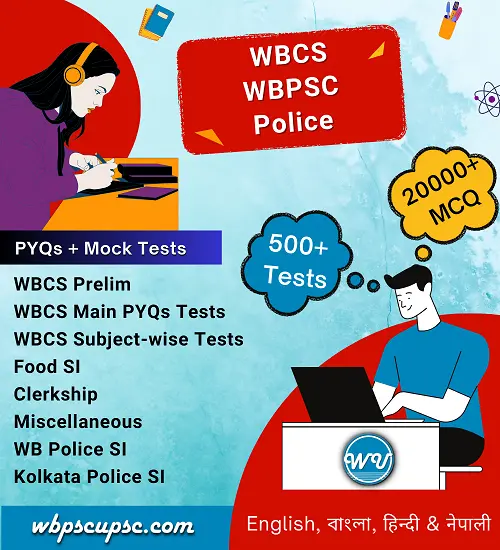April 2, 2019
Municipalities – Urban Local Bodies in India
Contents
>>>>>
- Article 243P to 243ZG, Part IX-A, 12th Schedule
- 12th schedule contains 18 functional items of municipalities.
- Article 243-W deals with functions of it
- There are 8 types of urban local bodies in India.
- The System of urban local bodies was constitutionalized through the 74th Amendment Act of 1992.
- At the Central level, the subject of ‘urban local bodies’ is dealt with three ministries
- Ministry of Housing and Urban Affairs
- Ministry of Defence
- Ministry of Home Affairs
>>>>>>>>

>>>>>>>>
Evolution of Urban Local Bodies
- Urban local bodies originated and developed in modern India during the period of British rule.
- In 1687-88, the 1st municipal corporation in India was set up at Madras.
- In 1726, the municipal corporations were set up in Bombay and Calcutta.
- Lord Mayo’s Resolution of 1870 on financial decentralization visualised development of local self-government institutions
- Lord Ripon’s Resolution of 1882 has been hailed as the ‘Magna Carta’ of local self-government.
- He is called as the father of local self-government in India.
- The Royal Commission on decentralization was appointed in 1907, chairman was Hobhouse.
- Under Government of India Act of 1919, local self-government became a transferred subject
- In 1924, the Cantonments Act was passed by the Central legislature.
- Under Government of India Act of 1935, local self-government was declared a provincial subject.
- P V Narasimha Rao’s Government introduced the modified Municipalities Bill in the Lok Sabha in September 1991.
- It finally emerged as the 74th Constitutional Amendment Act of 1992 and came into force on 1 June 1993
Salient Features of Municipalities
- 3 Tiers of Urban Local Bodies
- Nagar panchayat for a transitional area
- Municipal council for a smaller urban area
- Municipal corporation for a larger urban area
Wards Committees
- Article 243S
- There shall be constituted a wards committee, consisting of one or more wards, within the territorial area of a municipality having population of 3 lakh or more.
Reservation of Seats
- The act provides for the reservation of seats for SCs and STs in every municipality in proportion of their population.
- It provides for the reservation of not less than 1/3 of the total number of seats for women (including the number of seats reserved for woman belonging to the SCs and the STs).
Duration of Urban Local Bodies
- The act provides for a 5 year term
- It can be dissolved before the completion of its term.
- Fresh elections shall be completed within 6 months from the date of its dissolution.
- Municipality constituted upon the dissolution, shall continue only for the remainder of the period
Powers and Functions
- Preparation of plans for economic development and social justice
- Implementation of schemes including 18 matters listed in the 12th Schedule.
Application to Union Territories
- President of India may direct provisions of this act shall apply to any union territory subject to such exceptions and modifications as he may specify.
Exempted Areas
- The act does not apply to the scheduled areas and tribal areas in the states.
- It shall also not affect the functions and powers of the Darjeeling Gorkha Hill Council of the West Bengal.
District Planning Committee
- Article 243ZD
- Every state shall constitute a district planning committee
- It consolidate the plans prepared by panchayats and municipalities
- Then prepare a draft development plan for the district as a whole.
- The state legislature make provisions for composition, election of members, functions of the committee
- 4/5th of the members of a district planning committee should be elected.
- They must be elected among the elected members of the district panchayat and municipalities in the district.
- The representation of these members in the committee should be in proportion to the ratio between the rural and urban populations in the district.
- The chairperson of such committee shall forward the development plan to the state government.
Metropolitan Planning Committee
- Article 243ZE
- Metropolitan area having a population of 10 lakh or more, one or more districts and consisting of two or more municipalities or panchayats or other contiguous areas.
- 2/3rd of the members of a metropolitan planning committee should be elected.
- They must be elected among the elected members of the municipalities and chairpersons of the panchayats in the metropolitan area.
- The representation of these members in the committee should be in proportion to the ratio between the population.
Types of Urban Local Bodies
Municipal Corporation
- Municipal corporations are created for the administration of big cities
- Established in states by the acts of state legislatures and in the UTs by the acts of the Parliament.
- A municipal corporation has three authorities
- council
- standing committees
- commissioner
- Council is the legislative wing of the corporation.
- It consists of the Councilors directly elected by the people, and few nominated persons.
- Council is headed by a Mayor, assisted by a Deputy Mayor.
- He is elected in a majority of the states for a one–year renewable term.
- He is a formal head of the corporation.
- Municipal commissioner is responsible for the implementation of the decisions taken by the council.
- He is the chief executive authority of the corporation.
- He is appointed by the state government and is generally a member of the IAS.
Municipality
- Municipalities established for the administration of towns and smaller cities.
- Council is headed by a president/chairman, assisted by a vice president / vice-chairman.
- Chairman of municipality plays a significant role in the municipal administration.
- He enjoys executive powers.
- Chief executive officer/chief municipal officer is responsible for day to-day general administration.
- He is appointed by the state government.
Notified Area Committee
- It is created for the administration of two types of areas
- a fast developing town
- a town which does not fulfill conditions for a municipality
- It is established by a notification in the government gazette
- Entirely nominated body by the state government.
Town Area Committee
- It is created by a separate act of a state legislature.
- It may be wholly elected or wholly nominated by the state government or partly elected and partly nominated
Cantonment Board
- A cantonment board is established for municipal administration for civilian population in the cantonment area.
- It is set up under the provisions of the Cantonments Act of 2006
- Cantonment Board works under the administrative control of the defence ministry.
- It is created and administered by the Central government.
- There are 62 cantonment boards in the country
- Cantonment board is partly elected and partly nominated.
- Elected members hold office for a term of 5 years.
- Nominated members (ex-officio members) continue so long as they hold the office in that station.
- The military officer commanding the station is the ex–officio president
- Vice president is elected by the elected members from among themselves for a term of five years.
- Executive officer of the cantonment board is appointed by the president of India.
Township
- Established by the large public enterprises to provide civic amenities to its staff who live in near the plant.
- The enterprise appoints a town administrator
- He is assisted by some engineers and other technical and non-technical staff.
- Thus, the township form of urban local bodies has no elected members.
Port Trust
- The port trusts are established in the port areas.
- It manages and protect the ports and provide civic amenities.
- A port trust is created by an Act of Parliament.
- Port Trust consists of both elected and nominated members.
- Its chairman is an official.
Special Purpose Agency
- States have set up certain agencies to undertake designated activities or specific functions for local urban local bodies.
- Functional local bodies are established as statutory bodies by an act of state legislature
- They function as autonomous bodies
- They are not subordinate agencies of local municipal bodies.
Municipal Personnel
Separate Personnel System
- Under this system, each local body appoints, administers, and controls its own personnel.
- They are not transferable to other local bodies.
- It is the most widely prevalent system.
- This system upholds the principle of local autonomy and promotes undivided loyalty.
Unified Personnel System
- State–wide services (cadres) are created for all the urban local bodies in the state.
- They are transferable between the local bodies in the state.
Integrated Personnel System
- Under this system, the personnel of the state government and those of the local bodies form part of the same service.
- They are transferable not only between the local bodies in the state but also between departments of state government.
- All-India Institute of Local Self-Government (Mumbai) constituted in 1927.
Municipal Revenue
Tax Revenue
- The revenue from the local taxes include property tax, entertainment tax, taxes on advertisements, professional tax, water tax, tax on animals, lighting tax, pilgrim tax, market tax, toll on new bridges, octroi and so on.
- In addition, the urban local bodies impose various cesses like library cess, education cess, beggary cess and so on.
- Octroi (taxes on the entry of goods into a local area for consumption, use or sale therein) has been abolished in most of the states.
- Property tax is the most important tax revenue.
Non-Tax Revenue
- This source includes rent on municipal properties, fees and fines, royalty, profits and dividends, interest, user charges and miscellaneous receipts.
- The user charges (payment for public utilities) include water charges, sanitation charges, sewerage charges and so on.
Central Council of Local Government
- The Central Council of Local Government was set up in 1954.
- It was constituted under Article 263 of the Constitution of India by an order of the President of India.
- The Council is an advisory body.
- It consists of the Minister of Housing and Urban Development and ministers for local self-government in states.
- The Union minister acts as the Chairman of the Council.
>>>>>>>>

